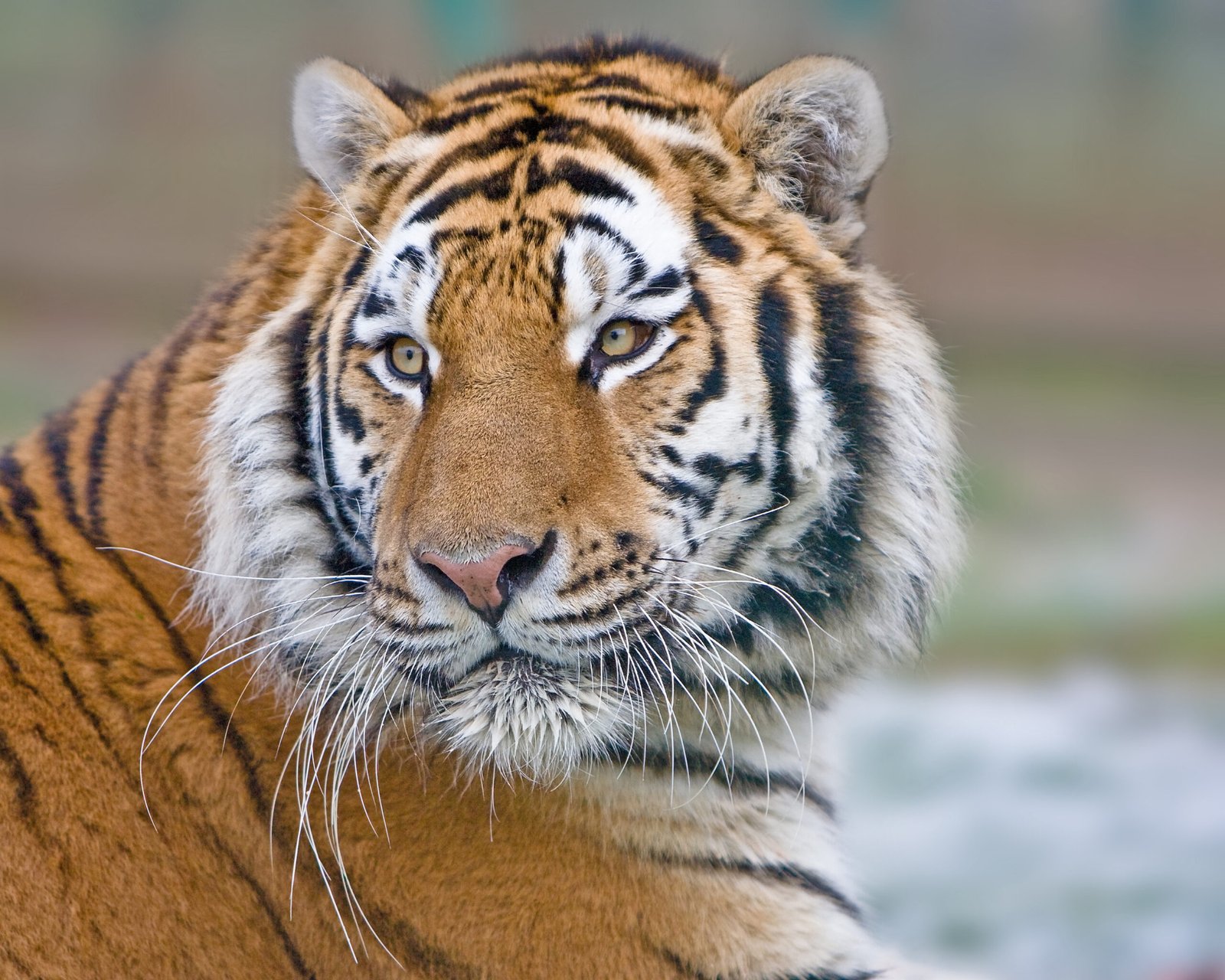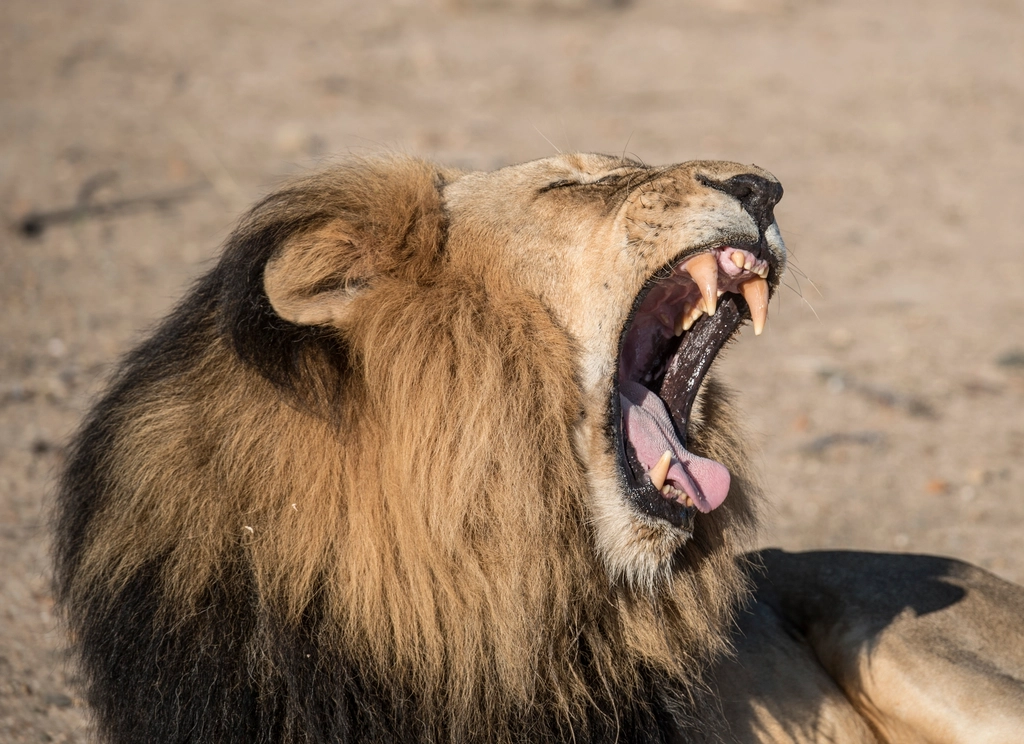Have you ever imagined a leopard slinking through city shadows, or a cougar silently watching from a suburban fence? Urban expansion isn’t just about new roads and skyscrapers; it’s quietly rewriting the lives of big cats in ways few of us notice. Every time a forest gives way to houses or highways, these magnificent felines are forced to adapt, often in surprising, even heartbreaking ways. Their ancient instincts collide with flashing car lights and the constant hum of human life. And somehow, these wild souls keep searching for space, safety, and something as simple as silence. Let’s explore how our growing cities are changing the very heartbeat of big cat behavior.
From Forests to Front Yards

Big cats, once rulers of vast, untouched landscapes, now find themselves tiptoeing around human neighborhoods. Imagine a jaguar, once hidden under dense rainforest canopies, now crossing garden fences and parking lots. This shift isn’t just about geography—it’s about survival. Urban sprawl pushes their territories into tiny, fragmented patches. Suddenly, a backyard can become a hunting ground or a hiding spot. It’s both fascinating and bittersweet to realize that, for many of these cats, the line between wild and urban is blurring. We’re seeing more reports of mountain lions wandering into suburbs or leopards napping in city parks. It’s a reminder: as we expand, we’re not just taking space—we’re sharing it, for better or worse.
Night Moves: Becoming Creatures of the Dark

To avoid humans, big cats are shifting their schedules. Species like tigers and leopards that once hunted during dawn or dusk are now becoming almost entirely nocturnal in urban areas. The city lights might never dim, but these cats have learned to slip through shadows, moving while most people sleep. It’s a quiet rebellion, a way to reclaim some freedom in a world that rarely rests. But this change comes at a cost—altered hunting success, disrupted rest, and, sometimes, tragic encounters with cars or traps. There’s something haunting about imagining a powerful lion prowling dark city edges, simply trying to survive until morning.
Diet Switch: From Deer to Dogs

With familiar prey harder to find, big cats are learning to hunt what’s available—often domestic animals. Leopards in India have been spotted preying on dogs and livestock when natural prey disappear. It’s not out of preference, but necessity. This shift can spark fear and anger in communities, putting the cats at greater risk. It’s a heartbreaking cycle: fewer wild spaces mean fewer deer or antelope, leading cats to raid farms or suburbs for food. Some might see this as cunning adaptation, others as a tragedy born of desperation. Either way, it’s a powerful reminder of how closely our choices can shape the fate of wildlife.
Urban Obstacles: Navigating a Concrete Jungle

Highways, railroads, and sprawling developments don’t just fragment habitats; they create real, daily dangers for big cats. Many end up injured or killed trying to cross busy roads in search of food or mates. For a cheetah or a puma, dodging cars is nothing like outrunning prey. Some cities have tried to help, building wildlife corridors or underpasses. But the reality remains: every new barrier is a test of instinct and luck. There’s both awe and sadness in picturing a wild cat pausing at the edge of a highway, calculating its next move in a world that’s rapidly outpacing its ancient rhythms.
Secretive Strategies: Learning to Hide

Big cats are masters of stealth, but city life demands new tricks. They’re using abandoned buildings, culverts, and even storm drains as makeshift dens. This urban camouflage is both clever and risky. Young cubs can be hidden just steps from busy streets, and mothers must be hyper-vigilant against both human threats and other predators. Sometimes, people living nearby have no idea they’re sharing space with such powerful neighbors. It’s a humbling thought: the wildness we think is far away might be closer than we ever realize, quietly adapting in our midst.
Family Ties on the Edge

Urban stress changes family life for big cats. Mothers have to move cubs more often to avoid detection, and young cats might be forced to leave home earlier than in the wild. Some siblings end up separated, wandering into unfamiliar—and often dangerous—urban territory. These disruptions can trim survival odds for the next generation. Yet, there’s an inspiring resilience here. Despite all the upheaval, some big cat families still manage to thrive, crafting new routines in a world turned upside down. It’s a testament to their strength and adaptability, even when the odds seem stacked against them.
Human Encounters: Conflict and Curiosity

When big cats slip into cities, encounters with people are inevitable. Sometimes, it’s a fleeting glimpse; other times, it’s a standoff in a backyard or a busy street. These moments can spark fear, fascination, or even compassion. Communities may rally to protect a trapped leopard, or demand its removal after a livestock loss. Each encounter shapes local attitudes—will these cats be seen as dangerous intruders, or as neighbors needing space? The answer often depends on education, empathy, and the willingness to share our world with creatures that once ruled it alone.
Soundscapes and Stress

Urban environments are noisy—horns, sirens, construction, and constant chatter. For big cats, whose ears are tuned to the subtleties of prey and predator, this barrage is overwhelming. Chronic noise can raise stress hormones, disrupt sleep, and even alter communication between cats. Imagine trying to stalk quietly when every step echoes off pavement, or calling for a mate through traffic noise. These hidden stresses take a toll over time, affecting both health and behavior. It’s a reminder how even invisible factors, like sound, can ripple through wild lives in very real ways.
Changing Territories: Shrinking and Sharing

Big cats are famous for needing space—sometimes hundreds of square miles per individual. But urban growth forces them to shrink and overlap their ranges. This can increase fights between rival cats, or force unlikely alliances as they learn to share scraps of green space. The old rules of territory don’t always apply when the boundaries are highways and shopping malls. It’s fascinating to see how these animals negotiate their new reality, sometimes surprising scientists with their flexibility. At the same time, it’s sobering to know that too little space can mean conflict, injury, or worse.
Crossroads of Survival: The Peril of Roads

Roads are more than lines on a map—they’re deadly barriers for big cats. Every year, countless leopards, bobcats, and pumas are struck by vehicles while trying to cross between fragmented habitats. Young cats are especially vulnerable, unfamiliar with the dangers of traffic. Some cities have installed warning signs or speed bumps in cat hotspots, and a few have invested in wildlife overpasses. But the problem is massive and growing. For every safe crossing, there are dozens of near-misses and tragedies. It’s a stark example of how our infrastructure choices ripple out into the wildest corners of our cities.
Learning Our Schedules

Big cats are quick learners. In urban areas, they’ve picked up on human routines—when people leave for work, when streets are quiet, when garbage is most plentiful. Some leopards time their movements to avoid school drop-offs or rush hour. This ability to read and adapt to our patterns is remarkable, but it also means the cats are living with one eye always on us. Their survival increasingly depends on predicting human behavior, a skill no wild animal should have to master. It’s both a marvel of evolution and a sobering sign of our impact.
Rewriting the Rules of Hunting

Hunting in a city is nothing like stalking through a forest or savannah. Big cats must navigate fences, pets, and unpredictable obstacles. Some have learned to wait near garbage bins or livestock enclosures, using human-made structures to their advantage. Others have had to abandon old techniques, improvising in ways science is only beginning to understand. These adaptations show incredible intelligence and flexibility. Yet, every new hunting strategy comes with risks—especially if it brings the cats closer to people. It’s a delicate balancing act, with survival hanging in the balance.
Water Worries: Seeking a Drink in the City

Natural water sources are often the first casualties of urban sprawl. For big cats, finding clean, reliable water in a city can be a daily struggle. Some have been seen drinking from swimming pools, garden ponds, or even drainage ditches. This search can lead them dangerously close to humans, increasing the risk of conflict or exposure to chemicals. It’s easy to take a glass of water for granted, but for a thirsty leopard in a heatwave, an unattended sprinkler can mean the difference between life and death. Urban life transforms even the simplest needs into a challenge.
New Dangers: Disease and Poison

Cities bring big cats into contact with new threats like disease and poison. Consuming contaminated prey or scavenging from garbage can expose them to toxins, parasites, or illnesses carried by domestic animals. Outbreaks of distemper, mange, or even rabies have been linked to increased urban contact. Some cats fall victim to deliberate poisoning by people angry over livestock loss. These hazards are often invisible but deadly, and they add another layer of challenge for cats already struggling to survive. It’s a hidden cost of our expanding footprint, one that’s hard to see but deeply felt.
Unlikely Friendships: Coexisting with Other Animals

Urban edges bring together species that rarely meet in the wild. Big cats might share space with raccoons, foxes, or feral dogs—sometimes competing for food, other times ignoring each other entirely. These new relationships can change the balance of local ecosystems. In rare cases, cats have even been seen tolerating the presence of other predators, a truce born of necessity. Watching these interactions unfold is like glimpsing a new chapter in the story of survival. It’s a reminder that adaptation isn’t always about conflict; sometimes, it’s about uneasy coexistence.
Camera Traps and City Science

Researchers are using camera traps and GPS collars to study how big cats navigate cities. These tools provide incredible insights, capturing nighttime prowls or surprising daytime naps in hidden corners. Scientists have tracked leopards using railways as highways or cougars slipping through golf courses. Every image and data point helps conservationists understand what cats need to survive—and how we might better share space. It’s exciting to see technology revealing the secret lives of our wild neighbors, sparking curiosity and empathy in people who might never spot a big cat in person.
Education and Empathy: Changing Hearts

One of the most powerful tools for coexistence is education. When communities learn about the behavior and needs of big cats, fear can give way to respect—or at least understanding. Programs that explain why cats hunt pets or how to secure livestock can prevent conflict and save lives on both sides. It’s inspiring to see schoolchildren rallying to protect local leopards, or villagers developing new ways to live alongside pumas. Empathy grows when we see these animals not as threats, but as fellow survivors navigating a world we’re all shaping together.
Conservation in the Concrete Age

Conservationists are rethinking their strategies to help big cats in cities and suburbs. Instead of only focusing on faraway wildlands, they’re working with urban planners, local governments, and residents to create safer spaces for wildlife. This might mean building green corridors, protecting small patches of forest, or even changing how trash is managed. The goal isn’t just to keep cats alive—it’s to help them thrive, even as cities grow. It’s a shift in perspective, recognizing that true conservation means making room for the wild, everywhere we live.
Stories of Survival: Hope in Surprising Places

Despite all the challenges, there are stories of big cats not just surviving, but sometimes thriving in urban areas. Mountain lions returning to Los Angeles, leopards raising cubs outside Mumbai, bobcats weaving through Dallas suburbs—these stories inspire hope. They prove that adaptation is possible, even in landscapes we think of as purely human. Each success is hard-won, and often fragile, but it reminds us that wildness isn’t gone; it’s just learning new ways to exist. These tales can motivate us to do better, to build cities where both people and predators have a place.
Losses and Lessons: When Adaptation Isn’t Enough

Not every cat can adapt to city life. Many are lost to traffic, conflict, or starvation. Each loss is a quiet tragedy, a reminder of how much has changed—and how much is at stake. But within these stories are lessons: about the limits of adaptation, the importance of wild spaces, and the need for thoughtful planning. Every challenge faced by a big cat at the city’s edge is a message to us about balance, responsibility, and the fragile connections between all living things. It’s a sobering truth, but one that calls us to action.
Guardians of the Night: Community Role Models

Some communities have become true partners in big cat survival. Through citizen science projects, reporting sightings, and creating awareness, ordinary people are helping researchers track and protect urban felines. Neighborhoods are learning to secure garbage, fence livestock, and even celebrate the presence of these wild neighbors. These grassroots efforts show what’s possible when fear is replaced with stewardship. It’s a beautiful reminder that big cat conservation doesn’t belong only to scientists or governments—it’s in the hands of everyone who calls the city home.
Small Changes, Big Impact

Sometimes, the smallest changes make the biggest difference for big cats. Planting native shrubs, building simple crossing points, or keeping pets indoors at night can all help reduce conflict. These actions might seem tiny against the backdrop of urban sprawl, but for a single leopard or lynx, they can mean survival. Change doesn’t have to be grand to matter. It’s in the everyday choices we make, the way we design our neighborhoods, and the respect we show for the wild lives hidden just out of sight. Every bit counts, and every person can play a part.
Living on the Edge: The Future of Urban Big Cats

The future for big cats in cities is uncertain but not without hope. As urban expansion continues, so does our understanding of what these animals need—and how we can coexist. There will be challenges, losses, and difficult compromises ahead. But there’s also a growing movement to rethink how we build, plan, and live. With creativity, compassion, and a willingness to share space, there’s a chance for big cats to remain a living thread in the urban fabric. Their stories are still being written, and we all have a role in what comes next.
Conclusion

Big cats captivate us because they’re wild, powerful, and mysterious—but also because they keep finding ways to survive in a world that’s changing faster than ever. Urban expansion is reshaping their lives, pushing them to adapt in ways both heartbreaking and inspiring. As cities grow, so does our responsibility to create space for these remarkable animals. Their resilience is a testament to the enduring wildness in our world and, maybe, within ourselves. Will we rise to the challenge of sharing our cities with these silent prowlers, or will we look back and wonder what more we could have done?

Linnea is a born and bred Swede but spends as much time as possible in Cape Town, South Africa. This is mainly due to Cape Town’s extraordinary scenery, wildlife, and atmosphere (in other words, because Cape Town is heaven on earth.) That being said, Sweden’s majestic forests forever hold a special place in her heart. Linnea spends as much time as she can close to the ocean collecting sea shells or in the park admiring puppies.






